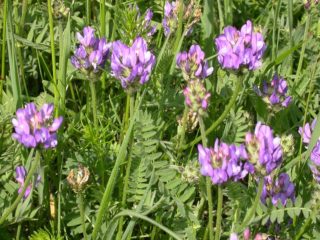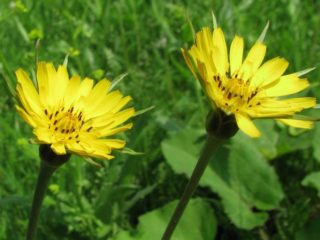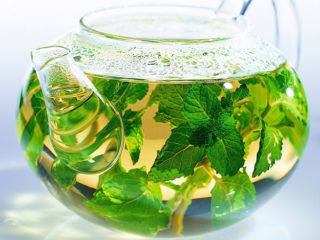Content
- 1 What it looks like and where it grows
- 2 Chemical composition
- 3 Medicinal properties and what heals astragalus woolly
- 4 Cooking methods
- 5 The use of the herb Astragalus woolly-flowered in folk medicine
- 6 Application in cosmetology
- 7 Contraindications to the use of woolly Astragalus and possible harm
- 8 Collection and procurement
- 9 Preparations containing woolly astragalus
- 10 Conclusion
- 11 Reviews of doctors about astragalus woolly
Woolly Astragalus is a plant with high medicinal value. To apply it correctly, you need to study the properties and recipes of traditional medicine.
What it looks like and where it grows
Astragalus woolly or fluffy (Astragalus dasyanthus) is a perennial plant from the legume family up to 35 cm tall. The stems of the culture are brownish with red hairs, recumbent or erect type, the leaves are oblong oval or lanceolate, grayish-green in color.
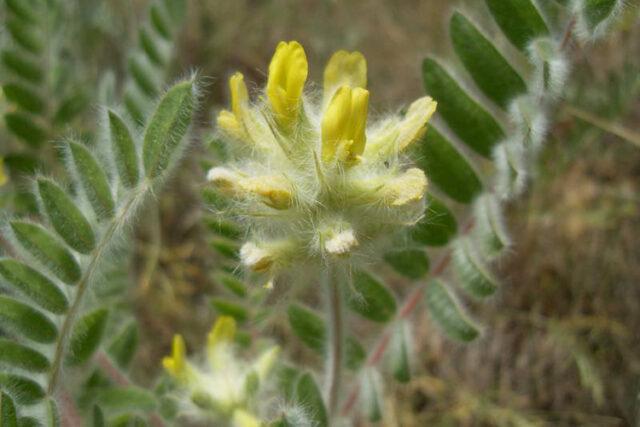
Like shoots, astragalus plates are covered with yellowish hairs.
In June and July, astragalus produces flower stalks about 15 cm tall with dense, capitate inflorescences of a round or oval shape. Each brush consists of 10-20 very small bell-shaped buds of white, yellow or purple hue. As you can see in the photo of the woolly Astragalus, the bracts are densely covered with light hairs, which makes the inflorescence seem shaggy. From July to September, the plant bears fruit, oval beans with a pointed top.
Woolly-flowered astragalus is widespread in the southern regions of Russia, as well as in Hungary, Ukraine, Moldova and the Balkan Peninsula. For growth, he chooses light deciduous forests, meadow slopes, glades and edges.
Chemical composition
The leaves, flowers and seeds of the woolly Astragalus contain a large amount of nutrients. Among them are:
- vitamin B9;
- ascorbic acid;
- iron, manganese and silicon;
- selenium and molybdenum;
- retinol;
- tocopherol;
- barium and phosphorus;
- organic acids and flavonoids;
- essential oils;
- tannins and alkaloids;
- polysaccharides;
- phytosterols;
- fiber and carbohydrates.
With proper processing, the plant has a pronounced healing effect and helps with many ailments.
Medicinal properties and what heals astragalus woolly
When consumed according to proven recipes, the plant improves well-being and prevents the development of dangerous diseases. In particular, Astragalus:
- stops bleeding and strengthens blood vessels;
- has an antitumor effect and serves as the prevention of oncology;
- has antibacterial and anti-inflammatory properties;
- promotes the healing of skin lesions;
- has a calming effect in case of nervous disorders;
- normalizes blood sugar and cholesterol levels;
- accelerates the processes of cellular renewal;
- reduces pressure;
- promotes rejuvenation of the body;
- strengthens the immune system and helps protect against viruses and colds;
- helps to get rid of edema;
- cleanses the liver and reduces the burden on this organ;
- removes toxins and toxic substances from the body;
- stimulates the brain.
For women, woolly astragalus is useful for gynecological diseases. First of all, it is used in the complex treatment of infertility. It is possible to take plant-based products with too abundant and painful periods, with inflammation of the reproductive sphere.
For men, woolly Astragalus helps maintain a healthy libido. In addition, the plant prevents the development of prostatitis and adenoma, improves blood circulation in the small pelvis. Taking funds based on perennials is useful as a prophylaxis for heart attack and stroke.
Cooking methods
Traditional medicine recommends using the roots, leaves and flowers of the plant for the preparation of medicinal products. The beneficial substances in the woolly-flowered astragalus dissolve well in water and alcohol bases.
Tincture of astragalus woolly flowered on vodka
For internal and external use, a strong tincture of a medicinal plant is suitable. They do it like this:
- 40 g of dried roots are poured with 500 ml of vodka;
- close the container with a lid and put it in a dark place for ten days;
- shake the vessel daily;
- when ready, filter the tincture.
You need to use the product 30 drops on an empty stomach three times a day. The drug helps with colds and inflammatory diseases, vascular ailments and high blood pressure.
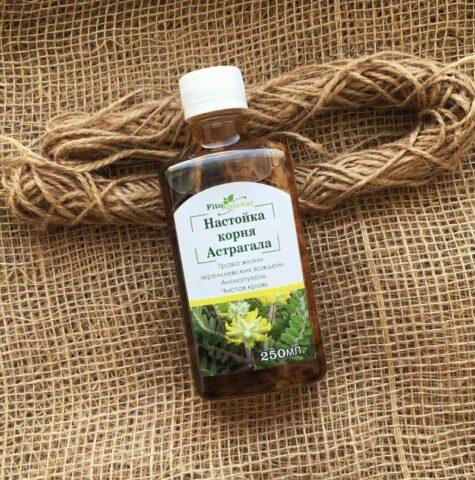
Tincture of woolly Astragalus can be made by yourself or bought at the pharmacy
Infusion
An aqueous infusion of woolly Astragalus is prepared as follows:
- two large spoons of plant roots are poured with 200 ml of hot water;
- stand under the lid for about half an hour;
- filtered through folded gauze.
Take the remedy 30 ml three times a day for general strengthening of the body.

You can consume infusion of woolly Astragalus without interruption for no more than six weeks
Decoction
To treat inflammation and eliminate edema, a decoction of the roots and leaves of a useful plant is used. The cooking algorithm looks like this:
- dried grass is crushed to a powder state;
- measure out 15 g of raw materials;
- pour a glass of fresh boiling water;
- over low heat in a water bath simmer for half an hour.
The finished herbal product is cooled to a warm state and filtered. You need to take the medicine two large spoons up to three times a day.
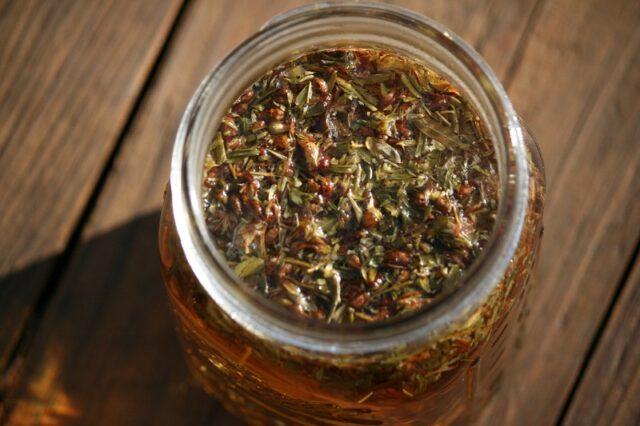
A decoction of woolly-flowered astragalus can be used for lotions and wipes on the skin
The use of the herb Astragalus woolly-flowered in folk medicine
Woolly-flowered Astragalus is quite popular in home health recipes. It is used to treat chronic ailments and acute conditions.
With heart failure
Woolly-flowered Astragalus improves blood circulation and stimulates the heart to function normally. The following infusion of the plant benefits:
- two small spoons of dry leaves are poured into a thermos;
- pour 400 ml of boiling water;
- withstand throughout the day;
- filtered through cheesecloth.
You need to take the product four times a day, 50 ml.
With diabetes mellitus
Woolly-flowered Astragalus helps to normalize blood sugar levels. For medicinal purposes, make the following infusion:
- crushed dry plant roots in a volume of 15 g;
- pour 250 m of boiling water;
- stand under the lid for four hours;
- passed through cheesecloth for filtration.
You need to take the product 50 ml three times a day on an empty stomach. In total, treatment is continued for three months, after which they take a break.
With hypertension
Woolly-flowered astragalus is treated with high blood pressure. Traditional medicine offers the following recipe:
- 20 g of dry leaves and flowers are poured into 200 ml of hot water;
- leave under the lid for two hours;
- filtered after cooling.
The infusion should be consumed up to five times a day in a large spoon.The course of treatment is three weeks, after a break, therapy can be repeated if necessary.
With oncology
Woolly-flowered astragalus is used in the complex treatment of tumors. Prepare the following remedy:
- 6 large spoons of crushed roots pour 1 liter of water;
- the mixture is boiled over low heat for ten minutes;
- the broth is cooled and filtered thoroughly.
The solution is taken in a large spoon up to five times a day for one and a half months. You need to use the product on an empty stomach.
For allergies
The perennial plant is beneficial for allergic dermatitis and other skin irritations. A good effect is given by tincture of the herb, but they do it like this:
- 20 g of dry plant roots are poured with 250 ml of high-quality vodka;
- kept in a dark place for ten days;
- pass the finished product through cheesecloth.
Use the remedy 20 drops four times a day until the symptoms disappear.

Astragalus tincture can be used to wipe cuts and ulcers
Astragalus baths are also good for allergies. It is necessary to pour 200 g of dry leaves in 2 liters of water, boil for ten minutes, and then insist for another half hour. The finished product is poured into a filled container and take a bath for no longer than ten minutes. It is necessary to repeat the procedures every other day.
For allergies, astragalus should be used with extreme caution. First you need to make sure that the healing plant itself does not cause itching and dermatitis.
With prostatitis
A decoction of woolly astragalus helps to relieve inflammation and pain in prostatitis. The cooking recipe looks like this:
- a large spoonful of crushed dry root is poured with 1 liter of water;
- in an enamel bowl, boil under a lid over low heat for 15 minutes;
- kept closed for about ten hours;
- filter.
The natural remedy is taken half a glass three times a day, the whole treatment is continued for two months. The broth is also used for microclysters, but in this case it must first be diluted with water in a ratio of 1: 2.
Application in cosmetology
Recipes with woolly Astragalus can slow down aging and prolong youth. The raw materials of the plant have a beneficial effect on the skin and help fight wrinkles, helps to eliminate cellulite and improves hair condition.
Astragalus for face
For sensitive skin and signs of early aging, the following mask is beneficial:
- a large spoonful of the roots of woolly astragalus is poured with 250 ml of hot water;
- kept under the lid for two hours;
- measure 15 ml of infusion;
- add 5 g of honey and fat cottage cheese;
- mix the ingredients.
The mask is spread over the face for 15 minutes, and then removed with clean warm water. It is advisable to repeat the procedure at least twice a week.
Astragalus for cellulite
A mixture of Astragalus infusion and honey helps to make the "orange peel" less noticeable. It is prepared according to this recipe:
- 20 g of dry raw materials plants are poured with a glass of boiling water;
- insist closed for two hours;
- mix 15 ml of a liquid product with an equal amount of natural honey;
- distribute the composition to problem areas and wrap it with plastic wrap.
It is necessary to keep the mixture for half an hour. Then the product is washed off with warm water and the skin is treated with a moisturizer.
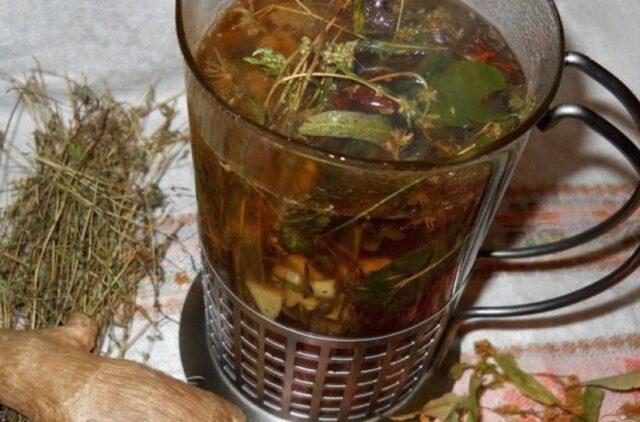
Astragalus accelerates metabolic processes under the skin and increases its elasticity
Astragalus for hair
The beneficial substances in the woolly Astragalus help to activate blood circulation under the scalp and improve the nutrition of the hair follicles. To restore the strength, volume and beautiful shine to the curls, it is enough to rinse the strands with infusions and decoctions of the plant after each wash. The results are visible on average after 2-3 weeks.
Contraindications to the use of woolly Astragalus and possible harm
The healing properties and contraindications of woolly Astragalus depend on the individual characteristics of the organism. It is advisable to give up the use of medicinal herbs when:
- intolerance to plant components;
- pregnancy;
- breastfeeding;
- hypertension;
- acute pancreatitis and stomach ulcer;
- internal bleeding.
Infusions and decoctions based on a medicinal plant are not offered to infants and young children. When using woolly Astragalus, the recommended dosages must be carefully observed. If the herb is used uncontrollably, side effects such as rashes, itching, swelling, nausea and indigestion can occur. The harm of woolly Astragalus is blood thinning, if there are problems with coagulation, an overdose of medicinal herb can aggravate the situation.
Collection and procurement
For medicinal purposes, it is customary to use the ground parts of a useful perennial and its roots. The first ones are harvested during the period of active flowering, carefully cutting off the leaves, peduncles and stems with sharply sharpened scissors. It is better to harvest the roots in early spring or autumn, shortly before the cold weather, at this time they accumulate the most useful substances. A perennial plant is dug out of the ground entirely, trying not to injure it once again, shaken off the soil and washed in running water.
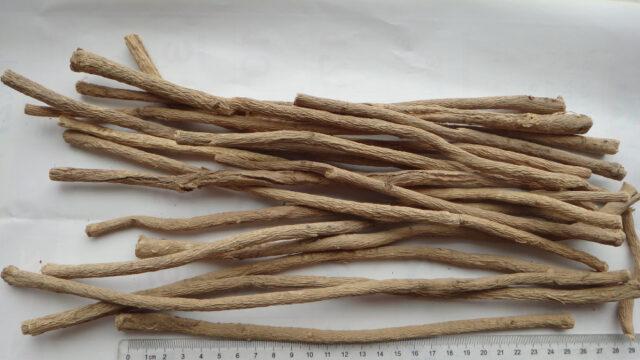
Unlike leaves and flowers, Astragalus roots are dried only naturally.
For drying, the prepared parts of the woolly-flowered astragalus are laid out in an even layer on a baking sheet and placed in a shaded but warm place with good air access. You can also use an oven or dryer, but the temperature should not exceed 50 ° C. When the raw material becomes brittle, it is laid out in paper bags. Store astragalus in a dry cabinet away from direct sunlight throughout the year.
Preparations containing woolly astragalus
The healing plant is used not only in folk medicine. You can meet woolly Astragalus as part of official pharmaceutical preparations.
In particular, plant extracts contain:
- in the preparation Flaronin, intended for the treatment of the kidneys;
- in Astragalus syrup, with its help eliminate stress and insomnia;
- in a water-alcoholic tincture of the plant, it is used internally and externally for inflammation;
- in capsules TA-65 - a useful food supplement designed to strengthen the immune system.
Officially approved drugs and dietary supplements containing a medicinal plant are recommended for use in cases of colds, fatigue, and stress. They are also used for serious illnesses as prescribed by a doctor as part of complex therapy.
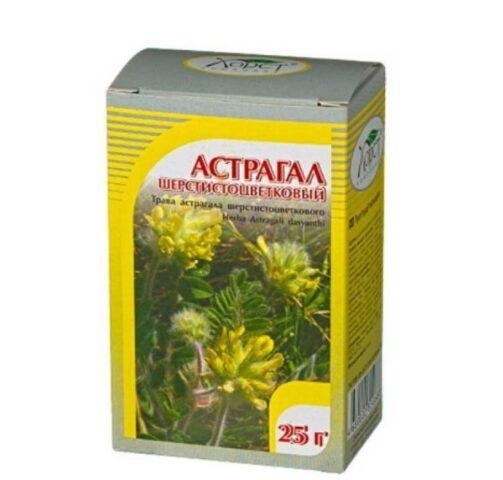
In the pharmacy, you can buy ready-made dry Astragalus herb for quick brewing
Conclusion
Woolly Astragalus is a useful plant with numerous medicinal properties. The roots of the herb are most valuable, but traditional medicine also uses leaves, buds and seeds to treat chronic and acute diseases.
Reviews of doctors about astragalus woolly



